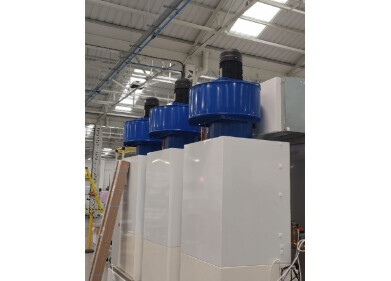Laboratory Products
How to Practice Social Distancing in a Lab Environment
Feb 17 2021
Research is critical to the development of COVID-19 vaccines, though the intimate nature of laboratories means scientists may be putting themselves at risk when it comes to social distancing. To help teams stay safe during the pandemic the Centres for Disease Control and Prevention has published guidance on how to practice good social distancing in lab environments. In addition to following the guidelines, the CDC has advised all laboratories to carry out site and activity specific risk assessments to maximise safety.
Some of the key risk reduction recommendations the CDC has outlined include:
- Analysing the number of people a laboratory can safely accommodate while adhering to social distancing rules.
- Consider the flow of employee traffic and ideally design one-way paths through the laboratory space.
- Revise cleaning and sanitising procedures for shared areas and equipment, including benchtops, desks and instruments.
- Review safety protocols for protecting high-risk staff. For example, employees with pre-existing respiratory issues.
- Implement a laboratory-specific COVID-19 health and safety plan.
- Introduce flexible sick leave policies and practices designed to encourage employees to stay home if they’re ill.
- Designate an individual point of contact to receive any COVID-19 concerns or questions held by employees.
- Reinforce training on basic infection control precautions, including handwashing.
- Ensure all employees have access to disinfectant products, hand sanitiser, soap and personal protective equipment (PPE), if necessary.
Remote collaboration tools, barricades and face masks
Where possible, the CDC has advised limiting laboratory tasks and activities that require face-to-face interactions. For example, utilising remote collaboration tools to host laboratory meetings, even if employees work in the same building. Ideally, barriers made from materials such as plastic and plexiglass should be placed between desks, workstations and equipment to further minimise the risk of spreading COVID-19. In spaces where social distancing is difficult to maintain, face masks are highly recommended.
Reminders to stay vigilant
Visual reminders can play an important role in encouraging laboratory staff to adhere to stricter social distancing and hygiene rules. Pinning up posters around common areas, bathrooms and other public spaces can help to boost safety in laboratory environments and keep staff as safe as possible.
Want to know more about the challenges faced by modern laboratories? ‘Decontamination methods for Bio Safety Cabinets’ explores the various methods used to sanitise Bio Safety Cabinets, including the use of formaldehyde, Vaporised hydrogen peroxide (Vhp) and Chlorine dioxide.
Digital Edition
Lab Asia 31.2 April 2024
April 2024
In This Edition Chromatography Articles - Approaches to troubleshooting an SPE method for the analysis of oligonucleotides (pt i) - High-precision liquid flow processes demand full fluidic c...
View all digital editions
Events
Apr 22 2024 Marrakech, Morroco
Making Pharmaceuticals Exhibition & Conference
Apr 23 2024 Coventry, UK
Apr 23 2024 Kintex, South Korea
Apr 23 2024 Seoul, South Korea
Apr 24 2024 Jakarta, Indonesia

.jpg)






.jpg)









